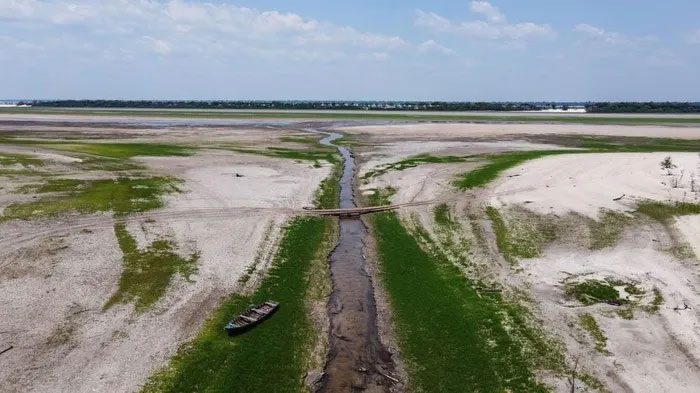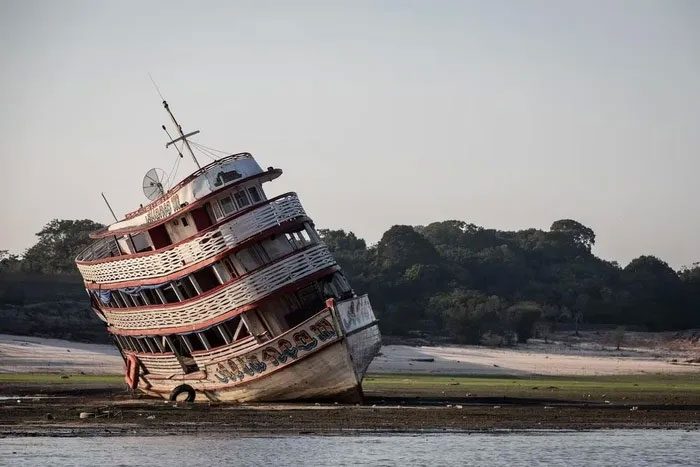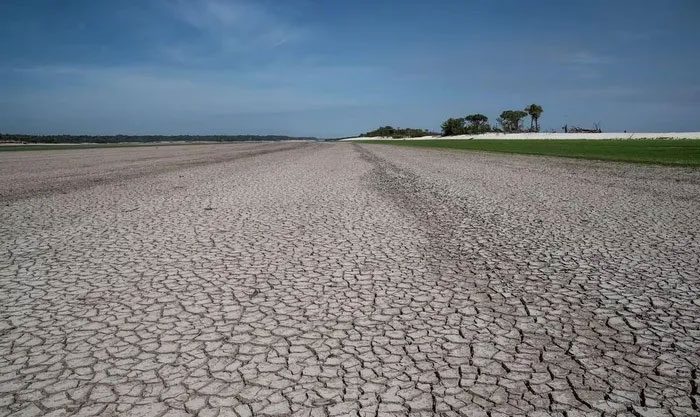The Amazon region is entering its fifth consecutive month of drought, and the water level in the Rio Negro, a northern branch of the Amazon River, has dropped to the lowest level in recorded history.
The Amazon Basin, home to the largest river and tropical rainforest in the world, which holds one-fifth of the Earth’s freshwater, is increasingly drying up.

The Rio Negro River – a branch of the Amazon River – is drying up due to drought. (Source: EPA-EFE)
ZaloFacebookTwitter).
This area is now experiencing its fifth consecutive month of drought, with the water level in the Rio Negro having fallen to historic lows.
The impacts of the drought are spreading throughout the rainforest. Transportation and trade along the river system have been disrupted. Brazil has been forced to shut down the country’s fourth-largest hydroelectric plant.
Key fish species in the Amazon River are struggling to reproduce, threatening the natural food supply.
One local resident stated: “I never thought I would see the bottom of the river I have traveled every day for the past 14 years.”
As the rainy season returns, river levels are beginning to recover. However, scientists predict below-average rainfall could lead to drought conditions returning to the region next year.
This current disaster follows severe droughts in 2005, 2010, 2015, 2016, and 2020. Each drought event—combined with deforestation and rising global temperatures—diminishes the resilience of the Amazon and pushes it closer to a tipping point where the rainforest could permanently transform into savannah.

A ship stranded due to the dry riverbed. (Photo: EPA-EFE)
Chris Boulton, a researcher at the Global Systems Institute at the University of Exeter and lead author of a 2022 study on Amazon tipping points, stated: “The forest could be recovering from one drought and then be affected by another while it is still in the recovery process. If that happens, it may take even longer to return to normal, and ultimately it reaches a threshold beyond which it cannot return to normal.”
The degradation of the Amazon rainforest will have significant consequences for the global climate. The forest stores 123 billion tons of carbon—more than three times the carbon emissions produced by humans last year—and the intact western region of the Amazon absorbs millions of tons of carbon from the atmosphere each year.
However, wildfires and deforestation have turned the eastern edge of the forest into a net carbon emitter. The remaining parts of the forest may face a similar fate.
The Amazon Rainforest on the Brink
This year’s drought is linked to a strong El Niño phenomenon, a climate pattern that often leads to drier conditions in the Amazon.
Rising temperatures due to human-induced climate change are likely exacerbating the drought by accelerating evaporation from the surface.
As summer and autumn temperatures have surged in Brazil over recent decades, average rainfall across the country has significantly decreased.

El Niño exacerbates drought conditions in the Amazon region. (Photo: EPA-EFE).
The drought conditions in the rainforest have reached the most severe levels in the past three months.
According to Nobre, significant droughts rarely occur in the Amazon—approximately once every 20 years. However, due to climate change, this phenomenon is happening more frequently today.
Deforestation can also worsen drought conditions by making the area drier.
The Amazon is so vast that it generates its own rainfall. Moist air from the Atlantic moves inland and drops rain near the coast, watering the forest edge.
The dense vegetation releases moisture back into the atmosphere through a process called transpiration. As winds carry moist air further inland, rainfall becomes more frequent. This process repeats throughout the entire forest.
But for the past five months, the river has been transformed by drought. Water levels have dropped to about 30 cm, the Amazon and its tributaries have been blocked by sandbanks, making river transportation challenging.
In October, the peak of the dry season, the water level gauge stood alone beside the dry river. Typically, it would measure around 3 meters at this time of year. However, on October 16, it recorded -0.76 meters, meaning the water had receded to a shallow stream in the riverbed, below the zero mark on the gauge.


















































